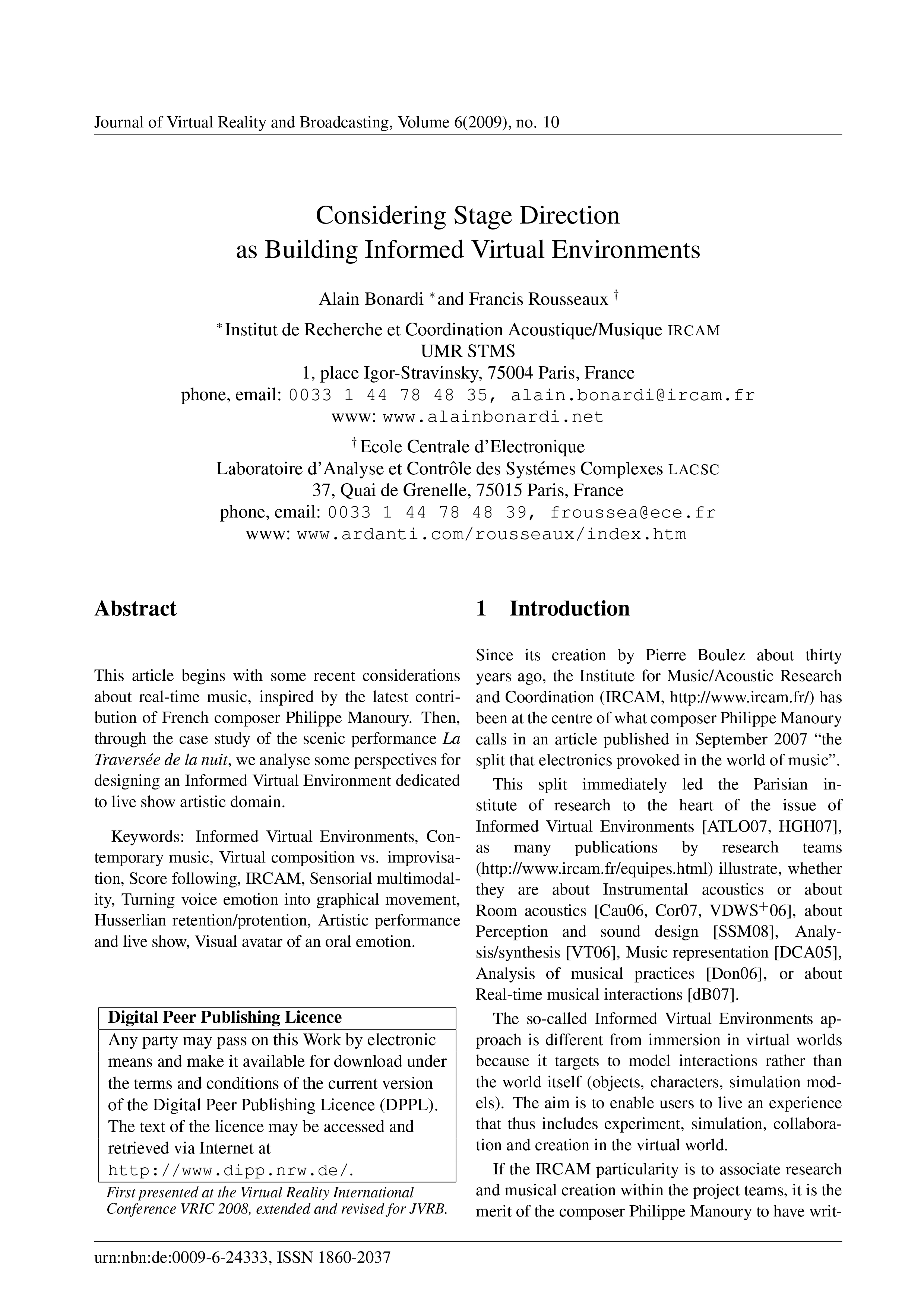Considering Stage Direction as Building Informed Virtual Environments
DOI:
https://doi.org/10.20385/1860-2037/6.2009.10Keywords:
Artistic performance and live show, Contemporary music, Husserlian retention/protention, IRCAM, Informed Virtual Environments, Score following, Sensorial multimodality, Turning voice emotion into graphical movement, Virtual composition vs. improvisation, Visual avatar of an oral emotionAbstract
This article begins with some recent considerations about real-time music, inspired by the latest contribution of French composer Philippe Manoury. Then, through the case study of the scenic performance La Traversée de la nuit, we analyse some perspectives for designing an Informed Virtual Environment dedicated to live show artistic domain.
Published
2010-03-19
Issue
Section
VRIC 2008





